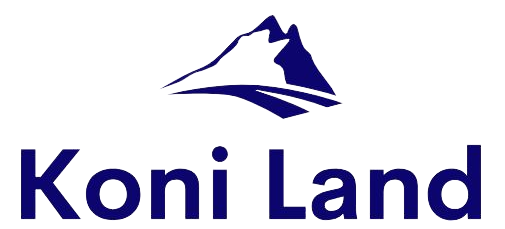
Table of Contents
Introduction
When it comes to selling your property, the preparation you do before listing can significantly influence the final sale price. For landowners, understanding the most effective ways to enhance the appeal and functionality of your land is crucial to attracting serious land buyers. Whether you’re dealing with buyers of land looking for large agricultural spaces, or land buyers interested in commercial development opportunities, making strategic improvements can substantially boost your property’s market value.
Experienced land buyers often emphasize that the right preparations can not only increase the attractiveness of a property but also streamline the sale process, leading to more profitable and efficient transactions. By following the insights and strategies from buyers for land, you can ensure that your property stands out in the competitive real estate market. This article will guide you through various proven techniques to maximize your land’s value before it hits the market, helping you to secure the best possible outcome from your sale.
Understanding the Basics of Land Appeal
The appeal and subsequent value of land are profoundly influenced by both market dynamics and inherent property characteristics. The demand for land fluctuates based on broader economic conditions, including shifts in the real estate market, interest rates, and regional development plans. Websites like Realtor.com and Zillow provide insights into current market trends, showcasing how these elements can influence land prices across different regions. For instance, an uptick in commercial development can increase demand for nearby parcels, thereby elevating land values in adjacent areas.
When assessing the value of land, several key factors come into play:
- Location: The proximity of a land parcel to urban centers, amenities, and transport infrastructure significantly affects its desirability and utility, thus influencing its market value. Sites like Google Maps can help visualize the strategic positioning of land relative to important locales and infrastructure.
- Accessibility: Easy access is crucial, especially if the land is intended for frequent use or development. The Federal Highway Administration provides resources on public roadways and access factors that are vital for land valuation.
- Size and Usability: Larger plots often offer more flexibility and potential for development, making them more valuable; however, the shape and terrain can also impact practical usability and development costs. Tools like the USDA Web Soil Survey can offer valuable information on soil conditions and topography, which are essential for assessing land usability. These factors intertwine to define the attractiveness of a land parcel and its potential for appreciation in value over time. Understanding these elements is crucial for landowners aiming to maximize their property’s appeal to potential buyers.
What to sell your land to a land buyer?
Want to find the best buyers of land?
contact us now!
Preliminary Steps Before Making Improvements
Before embarking on any improvement projects, it’s essential to have a clear understanding of your land’s characteristics and potential. Conducting a thorough land assessment is the first step. By hiring a professional surveyor, you can gain valuable insights into your property’s strengths, weaknesses, and unique features. The National Society of Professional Surveyors (NSPS) website provides resources on finding qualified surveyors and understanding the surveying process. This assessment will help tailor your improvement efforts to enhance both the functionality and attractiveness of your land.
In addition to a survey, consulting with various land-related professionals is crucial. Land planners and real estate experts can offer advice on how to maximize your property’s marketability. They can help identify potential development opportunities, advise on legal constraints, and suggest strategic improvements based on current market demands. The American Planning Association (APA) offers resources on urban and rural planning, while websites like Realtor.com and local real estate associations can provide access to professionals with expertise in specific markets. Engaging with these experts ensures that your improvements are both legally compliant and aligned with market expectations, ultimately enhancing your land’s appeal to potential buyers.
Enhancing Accessibility and Visibility
Enhancing the accessibility and visibility of your land is crucial for increasing its appeal and value. Starting with clearing the land, removing debris, cutting back overgrowth, and eliminating any potential hazards are essential steps. These actions not only improve the physical accessibility but also boost the aesthetic appeal, making the property more attractive to potential buyers. Resources like the Environmental Protection Agency (EPA) provide guidelines on proper debris disposal and environmental considerations to keep in mind during such clean-up processes.
Improving road access is another critical aspect. Ensuring that your property is accessible via a well-maintained road enhances convenience, safety, and ultimately the value of the land. This includes potentially upgrading existing pathways or even paving new access roads. The Federal Highway Administration offers resources and guidelines on roadway construction and improvement, which can be invaluable for landowners looking to enhance access. Good road access ensures that your land is not only more accessible but also more marketable, appealing to a broader range of buyers—from residential developers to commercial investors.
Upgrading Land Utilities
Upgrading the utilities on your land is a strategic move that can significantly enhance its marketability and appeal. Water and Irrigation Systems are particularly crucial, especially for agricultural land. Ensuring there is a reliable water source not only supports farming activities but also increases the land’s attractiveness to residential developers in arid or semi-arid regions. The U.S. Geological Survey (USGS) provides extensive resources on water availability and management, which can be helpful for landowners looking to establish or upgrade water systems on their property.
When it comes to Electricity and Connectivity, modern land buyers often prioritize these utilities as essential components. The availability of electricity and high-speed internet access can drastically increase a property’s appeal, extending its potential use for residential, commercial, or industrial development. The Rural Utilities Service (RUS), a branch of the U.S. Department of Agriculture, offers programs that support the improvement of electrical and telecommunication services in rural areas. Ensuring your land is equipped with these utilities not only meets a critical need but also broadens the spectrum of interested buyers, enhancing your land’s overall market value.
Optimizing the Zoning and Usage
Understanding and strategically managing the zoning of your land is pivotal for maximizing its potential and value. Understanding Zoning Laws involves knowing the specific zoning regulations that apply to your land, which dictate the types of developments and uses allowed. This information is crucial for making informed decisions about how to market your property and what improvements to undertake. Local government websites often provide zoning maps and regulations, offering landowners a direct resource for this information. Additionally, the American Planning Association (APA) offers insights into zoning principles and how they impact land use across different regions.
Applying for Rezoning can be a strategic step if the current zoning limits the potential uses of the land that could otherwise attract higher-value developments. If the local market conditions support it, rezoning your land to permit residential, commercial, or mixed uses can significantly increase its market value. This process typically involves submitting a proposal to local planning authorities, often found on the city or county’s planning department website, where guidelines and application forms for rezoning are provided. Successfully rezoning land requires a solid understanding of local laws and market needs, which can be complex but highly rewarding if executed correctly.
Making Strategic Improvements
Making targeted, strategic improvements to your land can significantly enhance its appeal and functionality, thus increasing its market value. Minor Land Improvements like installing sturdy fences, engaging in minor landscaping, or creating clear, navigable paths can make a substantial difference. These enhancements not only improve the visual appeal but also the practical usability of the property. Resources such as the Home Depot or Lowe’s websites offer guides and materials for DIY land improvement projects, providing landowners with accessible options for enhancing their property.
Preparing for Specific Buyer Interests involves tailoring these improvements to suit the needs of potential buyers. If your land is likely to attract agricultural buyers, consider enhancing irrigation systems or clearing land for cultivation. For residential development, ensure utilities are up to standard and consider visual improvements that make the space more appealing for future homeowners. Commercial developers might value improved access roads and pre-prepared building sites. Understanding these needs can be aided by market research from real estate websites like Zillow or commercial property resources like LoopNet, which provide insight into what various buyer segments value in a property. By aligning your improvements with the expectations and requirements of these buyers, you can significantly boost the attractiveness and competitiveness of your land on the market.
Marketing Your Land Effectively
Effective marketing is essential to attract the right buyers and secure the best possible deal for your land. Creating Attractive Listings involves using high-quality photographs and crafting compelling descriptions that highlight the unique features and potential uses of your property. Websites like Realtor.com offer tips on how to take real estate photos that stand out, and resources such as Canva provide tools to create appealing visual content for your listings. Ensuring that your listings are well-presented can make a significant difference in attracting interest from potential buyers.
Targeting the Right Audience is about using strategic marketing to reach those most likely to be interested in your land. For instance, if you are selling farmland, consider placing digital ads in agricultural publications or on websites like Farm Journal or AgWeb, which cater to the farming community. For residential or commercial properties, platforms like Facebook and LinkedIn allow for targeted advertising based on demographics, location, and interests. Utilizing these targeted marketing strategies ensures that your property reaches the appropriate audience, increasing the chances of a sale that meets your expectations.
Conclusion
Investing time and resources into preparing your land for sale is crucial for maximizing your returns. The strategic enhancements discussed, from improving accessibility and utilities to making minor aesthetic improvements, play a significant role in increasing the value of your property. These efforts not only make your land more appealing to a diverse array of potential buyers but also help to accelerate the selling process. By effectively marketing your improved land, you position yourself to achieve a profitable and efficient sale. Resources such as the National Association of Realtors provide further guidance on how to enhance and sell your property effectively, reinforcing that these preparatory steps are invaluable in the real estate market. Engaging with these strategies ensures that you meet your sales goals while obtaining the best possible outcome for your investment.

